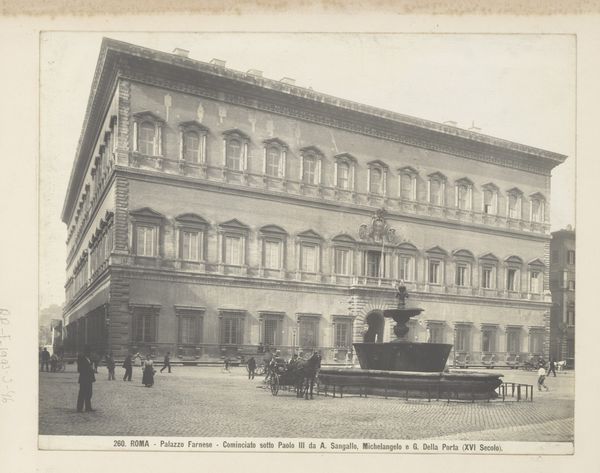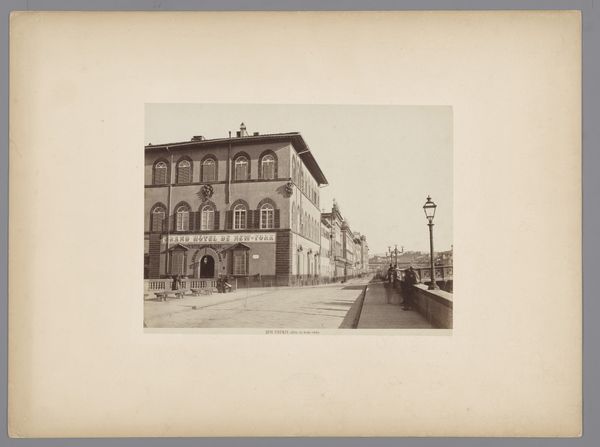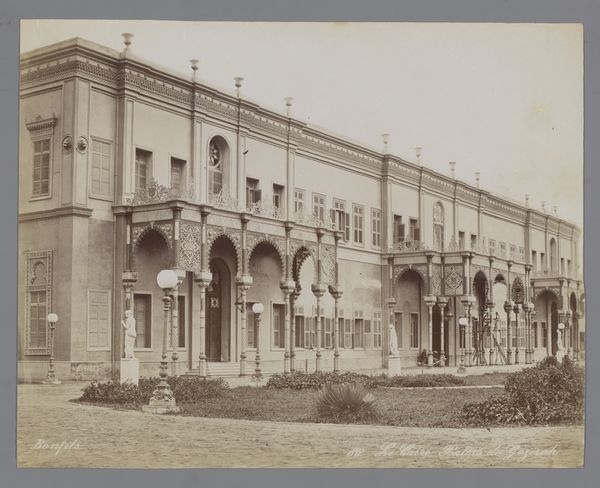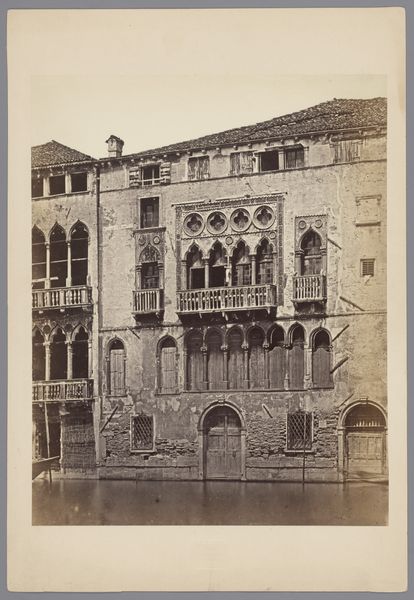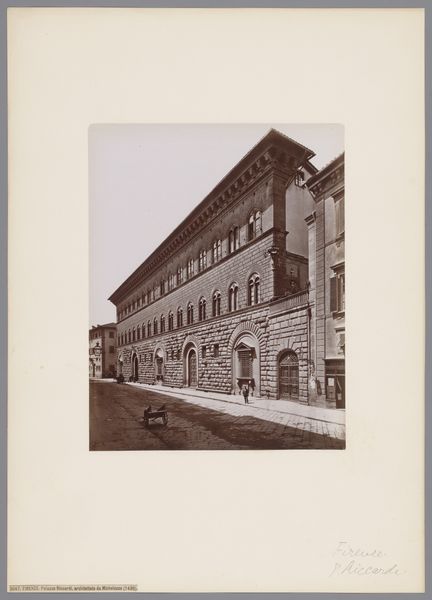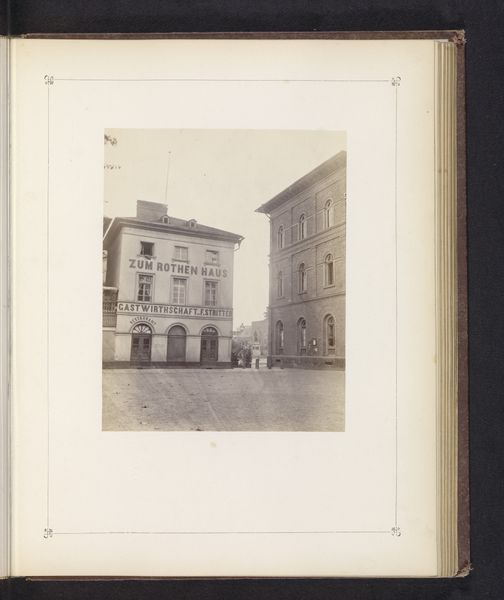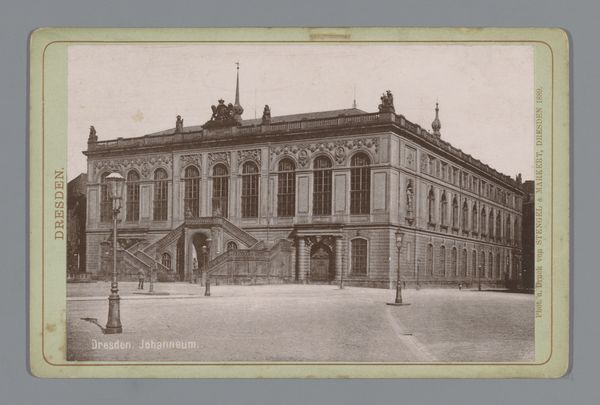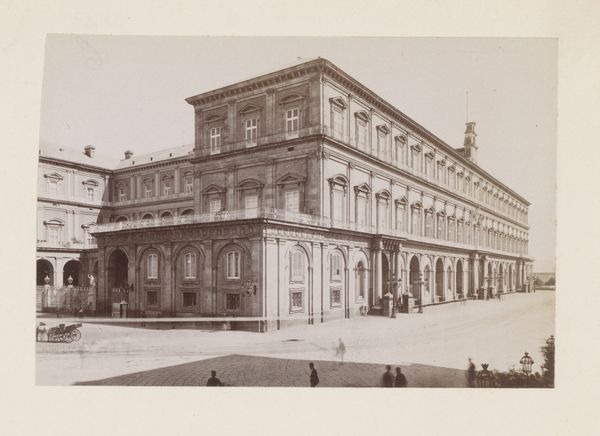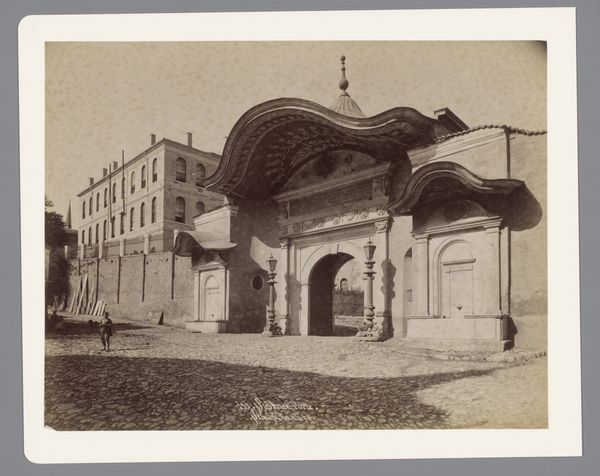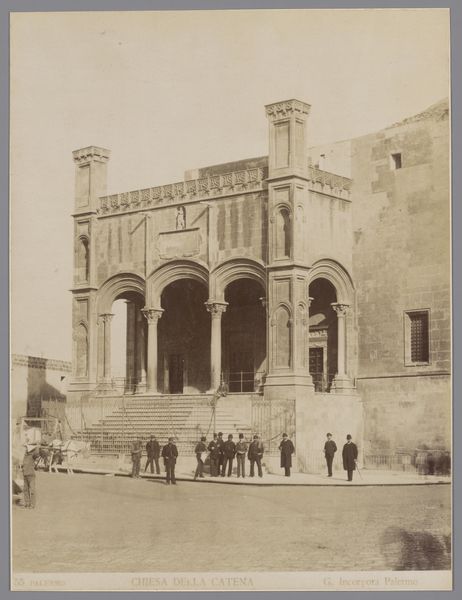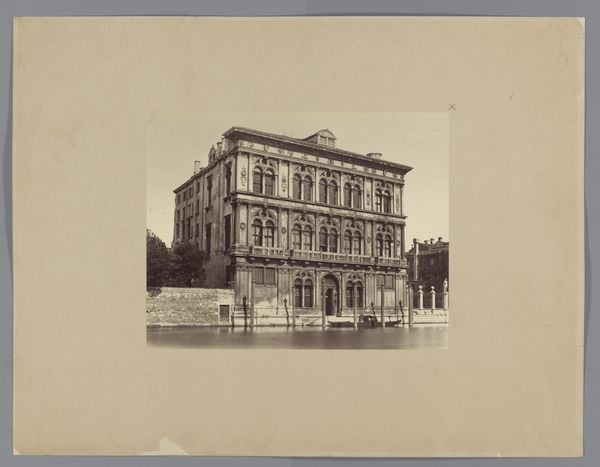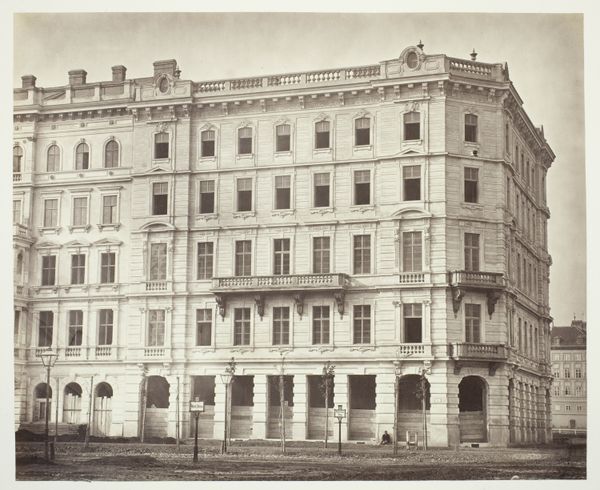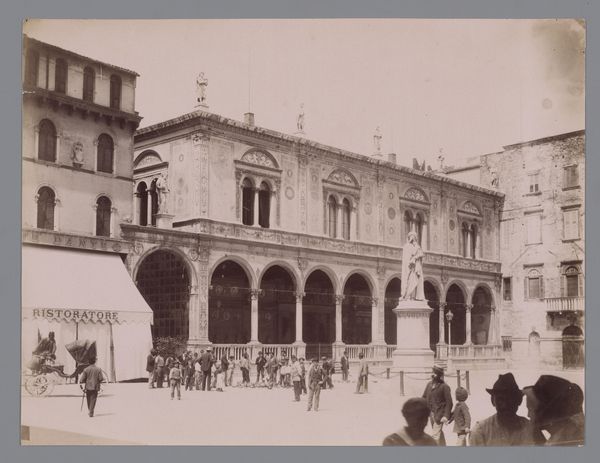
Florence_ Piazza S. Spirito, Palazzo già Guadagni (Simone del Pollaiolo), No. 2881 c. 1880 - 1890
0:00
0:00
albumen-print, paper, photography, albumen-print, architecture
#
albumen-print
#
landscape
#
paper
#
photography
#
italy
#
albumen-print
#
architecture
Copyright: Public Domain
Curator: This is an albumen print from around 1880 to 1890, captured by Fratelli Alinari. It depicts the Piazza S. Spirito, Palazzo già Guadagni, designed by Simone del Pollaiolo in Florence. Editor: My first thought? It feels incredibly still, almost ghostly. The sepia tones give it this antique gravity, like the stones themselves are holding their breath. Curator: Yes, that sepia tone. It immediately places the viewer within the visual vocabulary of early photography, when such chemical processes were still relatively novel. What’s potent here is the superimposition of a rapidly evolving medium onto the enduring edifice of Renaissance architecture. Note the façade and how the building looks back into history by reasserting design traditions and aesthetic values from previous times. Editor: Totally. The play between shadow and light across the façade is quite striking. You can almost feel the heat radiating off those stones. There's something quite imposing in the repetition of the arches... like a silent, rhythmic mantra. And look at the people at the front of the Palazzo. Curator: Notice how they look like diminutive figurines by comparison? A familiar trope, to reinforce the monumental importance and legacy of architectural prowess and to reinforce what humans can aspire to with design that can last over the centuries. It draws you into reflecting about our relationship to built environments across temporal plains, and how deeply invested we are in preserving heritage. The architecture whispers about human ingenuity and legacy. Editor: It also hints at how fragile we all are and the inevitability of mortality against such enduring forms! I find that melancholic, yet oddly comforting, don’t you? We’re all passing through but something remains and the picture’s quietude makes me listen attentively. Curator: Absolutely. In a way, it mirrors how collective memory works: distilling essential features over time to create a shared symbolic representation that grounds communal identity. And, paradoxically, that distilled form also freezes its representation at the point of distillation. Editor: So true, and this photograph holds that paradox beautifully. It offers not just a static image but an active engagement with time, memory, and legacy. I guess these old buildings still have plenty to teach us. Curator: Indeed. Each line and arch in this albumen print reverberates with history and invites profound reflection.
Comments
No comments
Be the first to comment and join the conversation on the ultimate creative platform.
